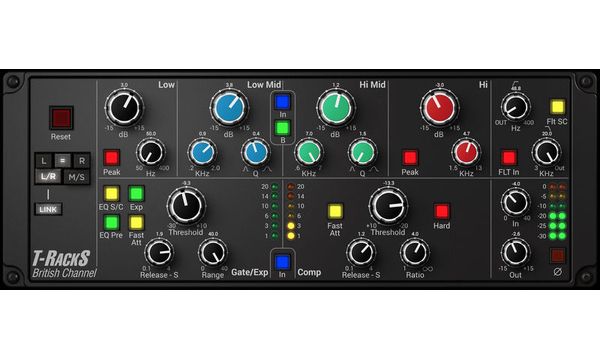
Ik T-Racks Software Application That
IK Multimediaâs T-RackS is a popular stand-alone audio mastering software application that includes a suite of powerful analog-modeled and digital dynamics and EQ processor modules that also work perfectly as plug-ins during mixing. There is no doubt that these colors represent one of the biggest names in recording and thanks to Dave. The old military spec paint, the iconic combination of red and blue Marconi knobs with grey fluted concentric knobs even people who aren’t in the business of recording can recognize the design. Review: IK Multimedia T-Racks EQ73 & 81.

Itâs OK to have empty tracks that youâre saving for an instrument when you track or overdub, but if youâve gotten this far without using them, you donât need them now. The idea is to make everything easy to locate during the mix.As before, itâs best to make a copy of the session thatâs designated as the âmixâ (âsongtitle mixâ) so itâs easy to see and locate at a later time, and also keeps your previous session safe if you ever have to go back to it.Empty, unused tracks take up space in your edit and mix windows and arenât doing anything useful. Variable Bit RateThis is the âhousecleaningâ stage where you get everything in the session nice and tidy before you actually commit to the actual process of mixing.

For instance, if the only delay in the 220 ms region is a 232 ms quarter-note-triplet, that’s the one to use. One that Iâve seen that works well even for tracking and overdubs is:For drums  – a reverb using a dark room set to about 1.5 seconds of decay with a pre-delay of 20 millisecondsFor all other instruments  – a plate with about 1.8 seconds of decay and a pre-delay of 20 millisecondsFor Vocals  – a delay of about 220 millisecondsIt’s amazing how well these settings work without any tweaking, but to make everything fit better, you can time the delay and pre-delays to the song, but keep the parameter close to the settings above. Secondly, many times itâs a lot easier and better sounding to compress or put an effect on an entire group rather than each individual instrument (although sometimes both works pretty well).Typical groups would pertain to any element that has more than one instrument or track, like Drums, Guitars (if thereâs more than one or theyâre in stereo), Lead Vocals (if thereâs a double), Background Vocals, Horns, Strings And Synths.By setting the groups up ahead of time and assigning the particular channels to them, your mix will be both faster and smoother.Most mixers have a standard effects starting point for mixing. First of all, groups allow you to separate elements of the mix in order to make the mix easier to adjust later. If the trackâs name currently is something like âgt012â, label it something easy to read like âguitarâ or âgtr.â Youâll be happy you did later.Groups are often overlooked but theyâre extremely useful during mixing for a number of reasons (see figure 1.4).


 0 kommentar(er)
0 kommentar(er)
